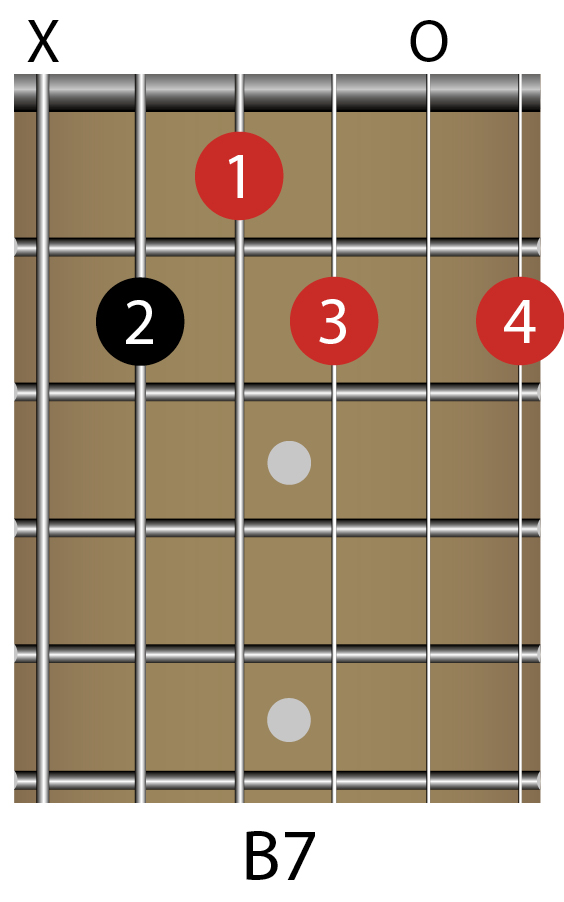"You can learn hundreds of songs with a few easy chords and some basic rhythm playing chops": Master five classic songs with just a handful of chords
Easy guitar songs made up of just four chords
When you start your guitar journey, it’s very easy to imagine that you’d need to learn hundreds of different things before you can master a song or two. The good news is, that isn’t entirely true.
There are loads of great songs out there from across the decades that are often a lot simpler to play than you might think. You can learn hundreds of songs with just a few easy chords and some basic rhythm playing chops, and before you know it you’ll have an arsenal of fully formed songs under your fingertips.
In this lesson we’re going to be checking out five well known songs that use just four chords.
1. Green Day - Good Riddance (Time of Your Life)
This Green Day song has become a staple in countless acoustic guitar players' repertoires. It’s a fun and simple song with a simple strumming pattern that repeats throughout the whole track.
The chords are G, Cadd9, D and Em
With this being quite a loose feeling song, you have some artistic licence to add a little variation should the need arise – so you don’t have to rigidly stick to a single rhythm.
Inside the strumming pattern, the only major challenge is skipping over beats 2 and 4 to come back in on the second 16th note (the 'e' if you're counting each beat as '1 e & a'). At these points of the rhythm you’ll actually be doing two upstrokes back to back.
Want all the hottest music and gear news, reviews, deals, features and more, direct to your inbox? Sign up here.
Song structure:
Intro
Verse
Chorus
Interlude (Same as Intro)
Verse
Chorus
Instrumental (Intro and Verse together)
Chorus
Interlude (Same as Intro)
Chorus
Outro (Same as Intro, end on G)




2. Eagle Eye Cherry - Save Tonight
This 90s classic is a guaranteed crowd pleaser. If you pull this one out at a small gig or a party, it always gets people singing. It's super-easy, with just one chord progression and one rhythm running all the way from start to finish.
The chords are Am, F, C and G
The rhythm sounds a lot harder than it is. If you imagine it as being straight eighth notes, you then only have to focus on adding some additional strums into the bar.
The additional strums occur on the 'a' of beat 2 (2 e & a), the 'e' of 3 (3 e & a) and the 'a' of 4 (you get the idea!). Note that on the original studio recording all the notes other than the downbeats on 2 and 4 are played with a slight palm mute.
This rhythm stays the same throughout the entire song and each bar contains two chords found on beats 1 and 3. Bar 1 is Am to F and bar 2 is C to G.
Song structure:
Am-F-C-G throughout




3. The Cranberries - Zombie
Another song that leans heavily on a single progression (for the most part) is Zombie by The Cranberries. This song holds the same progression until after the second chorus where it adds a slight variation.
The chords are Em, C, G and D/F#
Rhythmically, it's very straightforward, using straight eighth notes with an additional strum on the 'a' of beats 2 and 4. Each chord is played for a whole bar.
The main change for this song occurs after the second chorus in the instrumental breakdown, you maintain the same rhythm but only move between Em and C until the guitar solo starts, at which point you go back to the main progression.
The outro of the song once again returns to alternating between Em and C.
Song structure:
Intro
Verse
Chorus
Instrumental
Verse
Chorus
Instrumental (Em to C)
Guitar Solo
Outro (Em to C)




4. Maroon 5 - She Will Be Loved
You’ll need a capo on the 3rd fret to play along with the studio recording of this early noughties classic. The original has a distinctive fingerpicked guitar figure that leads the song, but we’re going to emulate that with strumming here.
The chord shapes are Am, G, C and F
Thanks to the capo, the actual pitch of those chords is Cm, Bb, Eb and Ab
One of the trickiest aspects of this song is the rhythm that you’ll be using for the intro and verses. Our strummed part is going to simulate the rhythm of the fingerpicked guitar part.
This rhythm falls across two bars. In bar 1 you start with the Am, strumming on the '1 2 & 3 &' beats. On the '&' of beat 4 switch to the G. This change may feel a little rushed because it’s slightly ahead of beat 1 which is where we would expect to change chords.
Then we’re sticking to the '&' strums only for the two beats of bar 2 before playing '& 4 &' at the end of the bar. These offbeat strums are best played with upstrokes to keep the strumming hand flowing.
Once you hit the chorus, the rhythm straightens out and feels a little more predictable. At this point you switch to playing a downstroke on each beat and an upstroke on the '&' of beats 3 and 4. This is the same rhythm used for the bridge.
Song structure:
Intro
Verse
Chorus
Verse
Chorus
Bridge
Break (Same as Intro)
Chorus
Outro (Same as Chorus)




5. Jason Mraz - I'm Yours
The final song we’re going to check out is I’m Yours by Jason Mraz. While this is a four-chord song for the most part, there is also an additional fifth chord that gets played a very small number of times throughout the song. Note also that the song features a capo on the 2nd fret.
The chord shapes are A, E, F#m, D and B7
The capo raises the pitch of the chords by a tone to B, F#, G#m, E and C#7
The first two strums of each beat (the lower notes) are slightly palm muted and the second pair of pick strokes (the higher notes) are played so that the strings ring out. The main rhythm has a blues shuffle feel. You’ll be playing four notes per beat (16th notes), but they should be swung.
This is a hard feel to count if you’re new to rhythm so listen carefully to the play-through in the video and try to emulate the rhythm by sound rather than lose too much time counting it at this stage.
The majority of the song follows a simple progression of this rhythm and the chords A, E, F#m and D, all played for a bar each.
The first time the B7 chord appears is as a single strum at the end of the second verse before going into the chorus. It’s very obvious when you listen to the song where this is as there is a clear stop.
The only rhythm change is during the bridge where the rhythm becomes straighter and you play two chords per bar over the first two bars (A and E to F#m and E), before a bar of D and a bar of B7. On the second repeat of the Bridge you will be playing the B7 as a build up, gradually getting louder.
Song structure:
Intro
Verse
Chorus
Verse (With B7 at the end)
Chorus
Bridge
Verse
Chorus (B7 on last repeat)
Outro (Same as intro progression)





Leigh Fuge is a guitar player and content creator with a love for all things '80s. When he’s not creating gear demos for his Youtube channel he’s teaching students via his online guitar course Right Notes Music Tuition. Off camera he spends most of his time travelling around the UK performing at functions and corporate events. www.instagram.com/leighfugeguitar
